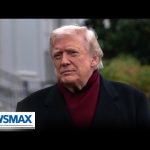Americans should be paying attention to 3I/ATLAS because it is not just another passing rock — it is the third confirmed interstellar visitor we’ve ever observed and it is being tracked closely by NASA and international observatories as it races through our neighborhood. Scientists say the object was discovered by the ATLAS survey and is already providing data about materials that predate our solar system, making it a rare and valuable object of study.
Harvard astrophysicist Dr. Avi Loeb has publicly warned that 3I/ATLAS presents anomalies worth watching, even suggesting it could, in theory, release mini‑probes at perihelion or take advantage of planetary gravity assists — a notion he urged NASA and officials to monitor closely. Loeb has argued that a deliberate maneuver or probe release near the Sun or on a Jupiter swing‑by would be the clearest technological signature, and he’s pressed for images and data that have not yet been widely released to the public.
At the same time, space telescopes including JWST have been studying the object and report an unusual, CO2‑dominated coma along with other volatiles, which fits a cometary picture but leaves room for hard questions about its size and behavior compared with past interstellar visitors. These measurements are precisely why some scientists, and those of us who trust empirical evidence more than institutional dismissal, say we should not reflexively rule out non‑natural explanations until the data are fully analyzed.
This is not mere academic musing; elected officials and other scientists have sounded the alarm about the security implications, calling for targeted observations from assets like Juno and Mars orbiters and recommending congressional oversight to ensure no critical data are hidden from the public. Conservative lawmakers like Rep. Anna Paulina Luna and others have urged a serious look at the possibility that probes could be released and asked NASA to share high‑resolution imagery and telemetry that could prove or disprove those fears.
International campaigns and workshops are being organized to improve our astrometry and monitoring over the next months, and responsible conservatives should insist that every capable instrument be pointed at this visitor so America leads the way in knowing what is in our skies. The stakes are not only scientific curiosity but national security and public safety, since even a tiny, unexpected object behaving like a probe would be an issue for civilian airspace and military planners alike.
Make no mistake: this moment calls for vigilance, not hand‑waving. We should applaud scientists like Dr. Loeb for asking uncomfortable but necessary questions, demand full transparency from NASA and our intelligence services, and ensure that America — not some distant bureaucracy — is at the forefront of observing, analyzing, and, if necessary, defending against anything that should threaten our homeland.




